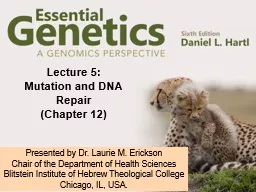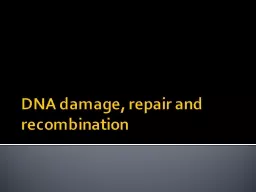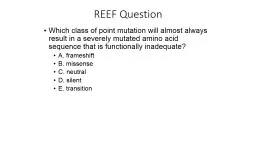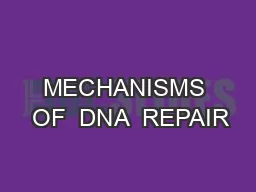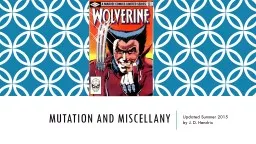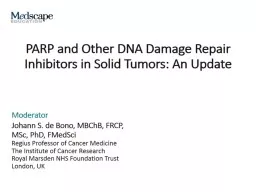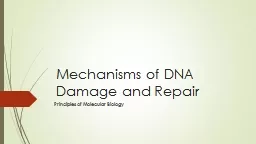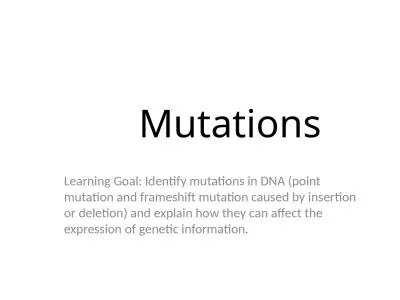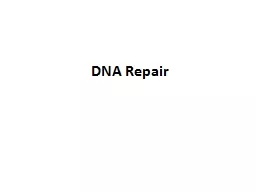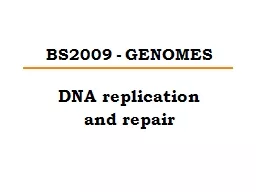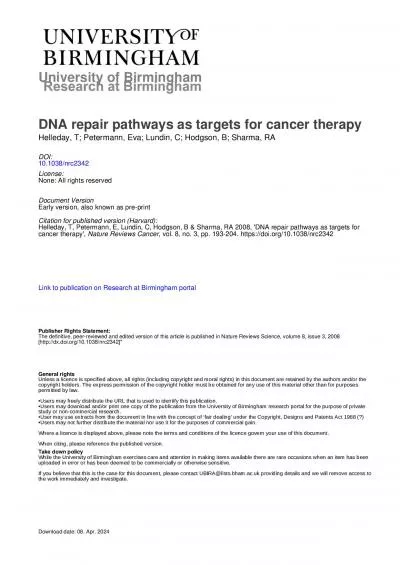PPT-Lecture 5: Mutation and DNA Repair
Author : teresa | Published Date : 2022-06-15
Chapter 12 Presented by Dr Laurie M Erickson Chair of the Department of Health Sciences Blitstein Institute of Hebrew Theological College Chicago IL USA 121122 Mutations
Presentation Embed Code
Download Presentation
Download Presentation The PPT/PDF document "Lecture 5: Mutation and DNA Repair" is the property of its rightful owner. Permission is granted to download and print the materials on this website for personal, non-commercial use only, and to display it on your personal computer provided you do not modify the materials and that you retain all copyright notices contained in the materials. By downloading content from our website, you accept the terms of this agreement.
Lecture 5: Mutation and DNA Repair: Transcript
Download Rules Of Document
"Lecture 5: Mutation and DNA Repair"The content belongs to its owner. You may download and print it for personal use, without modification, and keep all copyright notices. By downloading, you agree to these terms.
Related Documents

